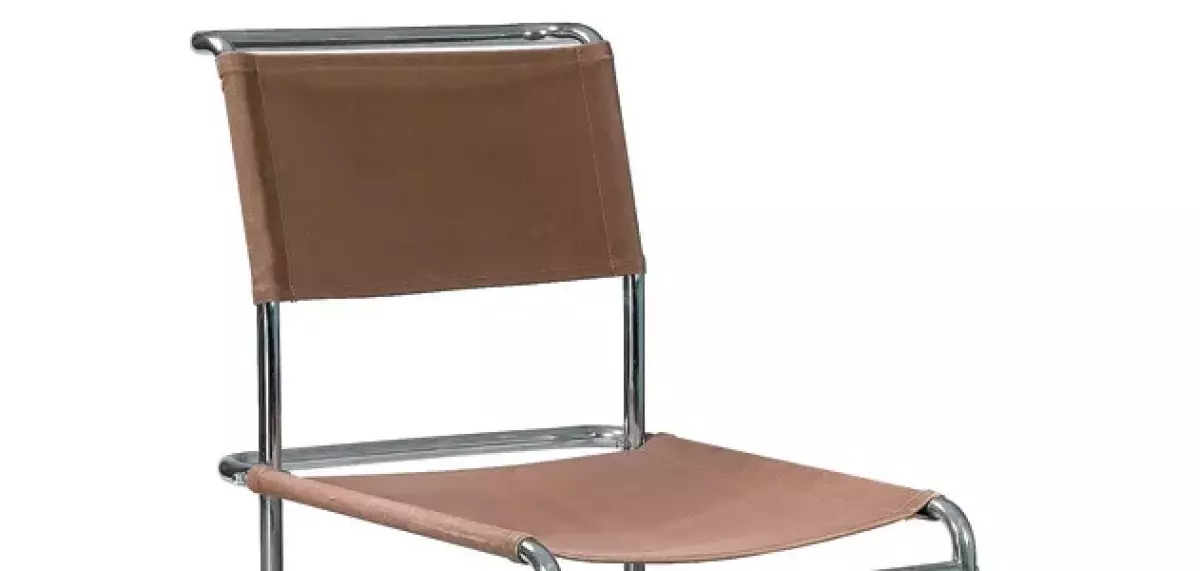 Cheryl Carlin
Cheryl Carlin
To paraphrase the great comic-strip possum Pogo, "We have seen chairs, and they are us."
Unlike the practical table or the bland, beckoning bed, a chair is never simply a chair. Taking the shape of a person, chairs are the most metaphoric of humanity's furniture, imitating us when we are in them, echoing us when we are not.
A Revolutionary Design, Ahead of its Time
Marcel Breuer, a Hungarian furniture maker and architect who studied at the Bauhaus, was among the first to use tubular steel in chairs. An early Breuer design, the B5 chair from 1926, has recently been added to the collection of the Smithsonian's Cooper-Hewitt, National Design Museum in New York City.
 Cheryl Carlin
Cheryl Carlin
"This chair is an iconic design that has been on our furniture wish list for a long time," says Sarah Coffin, curator of decorative arts at the museum. Born in Pecs, Hungary, in 1902, Breuer is one of the founders of the Modernist movement. The B5 is one of two revolutionary chairs that served as a dramatic antidote to the overstuffed seating of the Edwardian era and gave birth to a new way of seeing furniture. The other is the B3 armchair, also known as the Wassily Chair, because the painter Wassily Kandinsky, who was also on the Bauhaus faculty, admired and owned one.
A Perfect Expression of Modern Design
Both chairs—particularly the B5—have a spare elegance that epitomizes the clarity that Breuer and his associate Walter Gropius brought to their architecture. Considered one of the most perfect expressions of modern design, the B5 seems fresh even after more than 80 years. It combines delicacy with strength and boasts very happy, compact proportions.
Don Chadwick, co-designer of the ubiquitous Aeron office chair, describes the B5 as "very pure in its simplicity." It represents one of the first attempts to industrialize bent steel tubing as the support structure for sling seating surfaces.
Timeless Design, Empowering Functionality
Breuer's first bent metal designs were made with aluminum, but he soon switched to tubular steel due to cost and manufacturing difficulties. The example now at the Cooper-Hewitt, bought at auction in New York City, is a vintage piece with chrome-plated steel tubing and the original paraffin-infused canvas fabric known as Eisengarn (iron yarn). The B5 originally came in four colors: black, green, rust red, and blue.
After Hitler came to power in the '30s, Breuer left Germany for England, where he continued to experiment with new materials. He later immigrated to the United States, where he taught at Harvard and designed houses and large urban buildings. Breuer passed away in New York City in 1981 at the age of 79. However, the B5 lives on, with exact replicas still being manufactured in Germany.
The Breuer Chair, with its timeless appeal and innovative design, will always remain a symbol of the harmonious marriage between form and function in modern furniture. Its spare elegance and enduring style make it a must-have for design enthusiasts and a testament to the transformative power of design.
Owen Edwards is a freelance writer and author of the book Elegant Solutions.

















